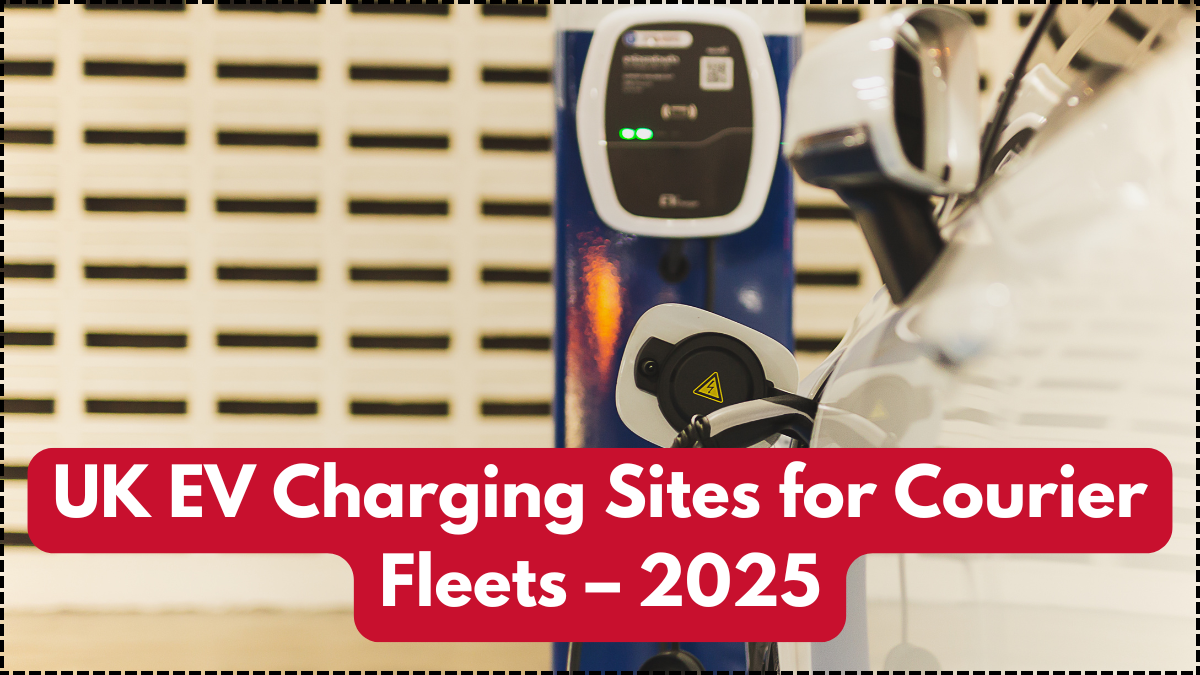As electric vehicle (EV) adoption accelerates across the UK, courier companies face a new operational challenge—knowing exactly where and how to charge their fleets. Reliable, fast, and widespread charging access is essential to maintaining delivery schedules and reducing downtime. That’s where understanding the EV Infrastructure UK for Couriers becomes critical.
Courier services that depend on fast turnarounds and high delivery volumes can no longer afford to view EV charging as an afterthought. Whether you’re managing ten vehicles or a nationwide fleet, knowing your charging network UK logistics can significantly boost efficiency and reliability in your operations. This guide will break down the current EV infrastructure landscape, regional availability, and best practices for couriers navigating the UK’s electric transition.
With courier businesses under pressure to cut emissions while maintaining profit margins, 2025 marks a pivotal year in EV integration—and charging access is right at the center of it.

Importance of Robust EV Infrastructure for Couriers
The success of EV fleets relies heavily on charging flexibility. In the courier industry, delays caused by inaccessible or slow chargers can affect hundreds of deliveries a day. That’s why the EV Infrastructure UK for Couriers isn’t just about locations—it’s about speed, reliability, and accessibility.
Here’s why courier companies must prioritize charging infrastructure:
-
Minimize delivery downtime with fast-charging options
-
Maintain regional and national coverage with distributed charging stations
-
Comply with low-emission zone (LEZ) regulations
-
Reduce fleet fuel costs and total operational expenses
-
Align with green logistics goals and improve brand sustainability
Companies that master the logistics of EV charging will gain a significant competitive advantage in 2025 and beyond.
Key Charging Networks Across the UK (2025 Overview)
The UK has seen major investments in EV infrastructure, with more than 53,000 public charging connectors across England, Scotland, Wales, and Northern Ireland. Here’s a table showing major charging networks couriers can rely on:
| Network Name | Coverage Area | Fast Charging? | Fleet Access Tools |
|---|---|---|---|
| BP Pulse | Nationwide | Yes | Fleet dashboard |
| Gridserve | Motorway Services | Yes | Account management |
| Instavolt | Urban & Regional | Yes | No subscription |
| Pod Point | Supermarkets/Offices | Limited | App-based control |
| Osprey Charging | Regional (South & North England) | Yes | RFID fleet cards |
This growing charging network UK logistics framework ensures that EV courier fleets are supported across both urban and long-distance routes.
Best Practices for Courier Fleet Charging
Managing EV charging in a courier environment is about planning ahead and maximizing vehicle uptime. Here are some key strategies for optimizing your fleet’s performance using the current EV Infrastructure UK for Couriers:
-
Map delivery routes to nearby rapid chargers
-
Use fleet-focused apps for real-time availability updates
-
Stagger vehicle charging during off-peak hours to avoid downtime
-
Install depot-based chargers where overnight charging is feasible
-
Monitor energy consumption data to refine delivery and charging schedules
Companies that integrate charging into their operational planning will see lower total costs and higher driver productivity.
Future Outlook for Courier Charging Access
With the UK government committed to ending the sale of new petrol and diesel vans by 2030, investments in EV Infrastructure UK for Couriers are accelerating. More urban zones are being equipped with curbside and depot-level charging stations, tailored for high-traffic courier vehicles.
Key future developments to watch for:
-
Fleet-specific charging hubs near urban logistics zones
-
Vehicle-to-grid (V2G) technology to manage energy flow
-
Subscription-based fast-charging services for high-mileage fleets
-
Expanded tax incentives for EV infrastructure installation
The growth of the charging network UK logistics will continue to reduce barriers for courier businesses transitioning to EVs.
Conclusion
Efficient delivery operations in the electric age depend on more than just switching to EVs—they require access to a scalable, reliable charging network. Understanding the EV Infrastructure UK for Couriers is now a key operational skill for logistics companies in 2025.
With the right strategy, tools, and awareness of top networks, courier fleets can charge smarter, deliver faster, and operate greener. As the charging network UK logistics continues to evolve, businesses that invest in infrastructure today will lead tomorrow’s sustainable delivery market.
FAQs
What are the most reliable charging networks for courier fleets in the UK?
BP Pulse, Gridserve, and Instavolt currently offer the most courier-friendly fast charging options nationwide.
Is depot-based charging better than public network usage?
For overnight or scheduled use, depot charging is more cost-effective. However, public fast chargers are essential for real-time flexibility.
How can courier companies monitor charging efficiency?
Fleet telematics and apps linked to networks like BP Pulse offer energy reports and charge tracking.
Are there government incentives for installing EV chargers?
Yes, grants like the Workplace Charging Scheme (WCS) support businesses installing on-site chargers.
Will the UK charging network keep pace with EV courier fleet growth?
Yes, the UK’s charging infrastructure is expanding rapidly, with over 100,000 connectors expected by 2026.
Click here to learn more